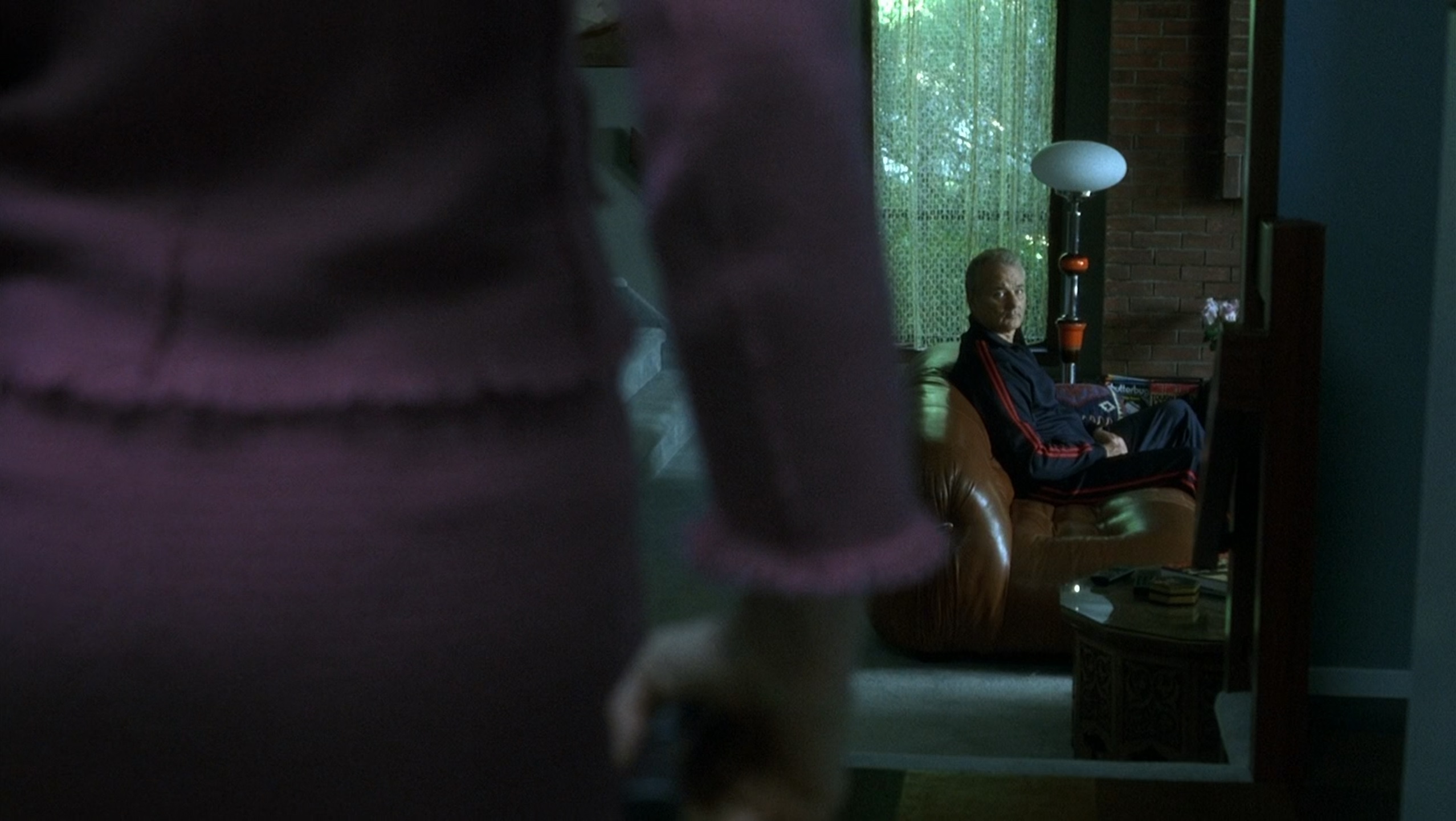 Broken Flowers (2005) 00:05:38
May 13, 2021
Broken Flowers (2005) 00:05:38
May 13, 2021
Jim Jarmusch and his Defeated and then Inspired Characters Don, Adam, and Paterson
Across all three of Jim Jarmusch’s films, Only Lovers Left Alive (2013), Paterson (2016), and Broken Flowers (2005) there are elements of gift giving, similarity of the shots, little but palpable dialogue, and the presence of other forms of art such as paintings, design, photography, and music. The three main characters of each Adam (Tom Hiddleston), Paterson (Adam Driver), and Don (Bill Murray) all reside in a world filled with culture and art yet stand at arms-length from embracing their surroundings and their lives. Jarmusch provides insight on how all three characters stand in juxtaposition to and alongside culture in the three films, each fascinated by, yet orbiting around their lives and its influences without being involved entirely. The central theme across all three films is that Jarmusch’s characters are eventually inspired and re-oriented by the same culture, music, art, or family that they reflexively avoid, in a dynamic depiction of the human condition.
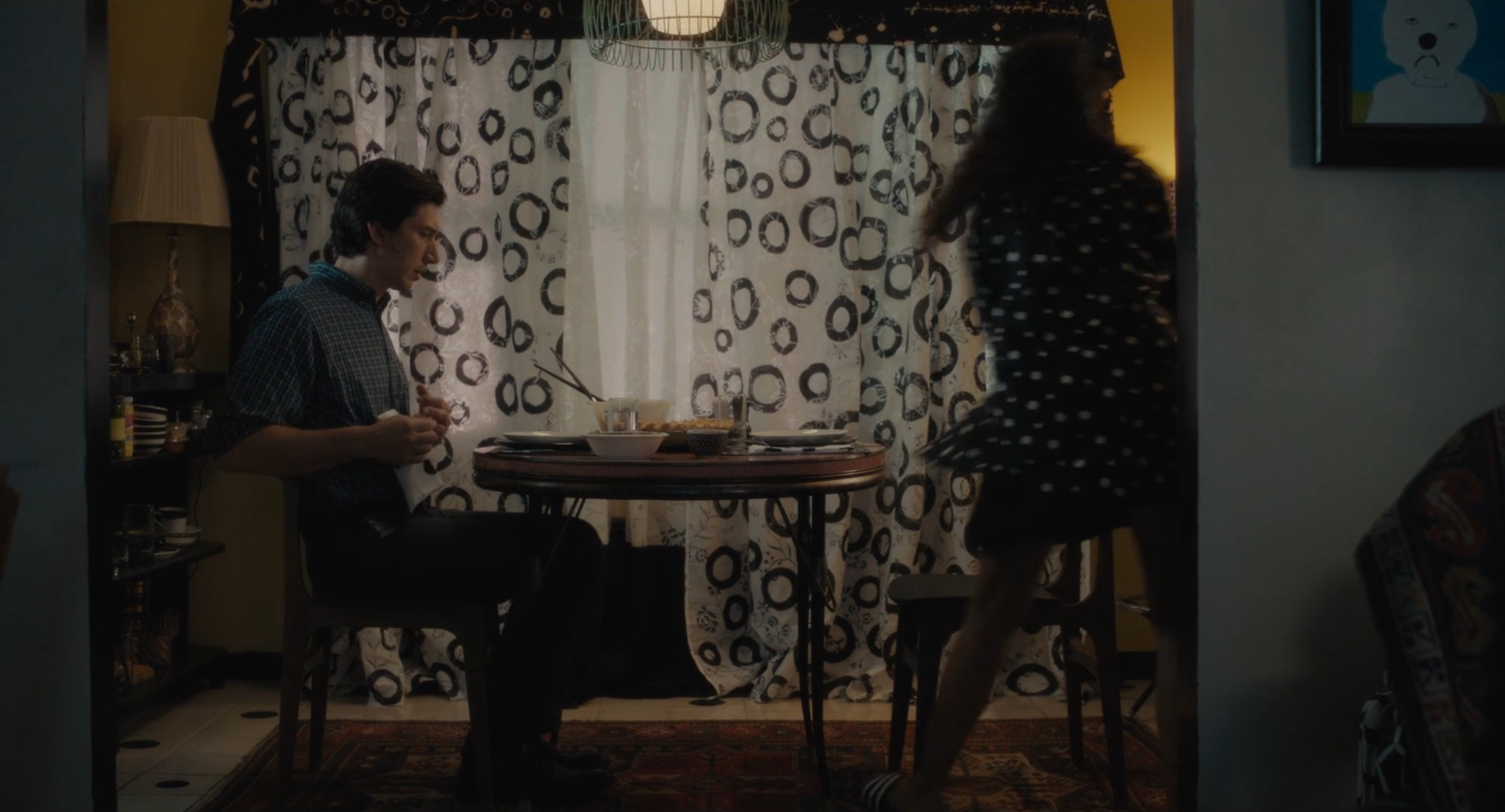 Paterson (2016) 00:58:27
Paterson (2016) 00:58:27
In “Crossing a Man-Altered Landscape: Driving and the Vehicle in the Road Movies of Jim Jarmusch”, Katerina Korola discusses the film Broken Flowers in the context of “travel films” and the presence of the concrete masses Don traverses that give off unusual and new moods. The avant-garde expressions throughout the film give off moments of beauty and oneness normally found in nature cuts but are relayed through a car window of a highway, a passing factory, or planes leaving an airport. Korola writes “disenchanted with the romanticism of earlier landscape photographers… delved into the everyday built environment of postwar America… Motels, strip malls, parking lots” (Korola, 20). This is replicated in Broken Flowers by the constant focus of the camera on the miles and scenery Don passes and travels through. Don perpetually inhabits different homes, hotels, and airports of grand and sometimes mundane structure, even his own home has an architecture of expansive and open design. These buildings and settings alienate but also invite the audience in to feel as an observer in the world themselves. Don mirrors this attitude of the scenery by being constantly disassociated and disinterested with the objects, people, and tasks in front and around him. The scene at 00:22:58-00:24:07 where Don has finished writing the list is a great example of how uninvolved he attempts to be with his own life and surroundings. This scene opens with the camera hovering over his completed list of possible relationships when the phone then rings over Winston’s (Jeffrey Wright) CD. Winston is the one calling, Don denies the existence of the list, and then Winston can be seen through the window and appears from the front door. They have a separate conversation in person and then continue their phone call once Winston leaves the house. It is a comical scene, but it shows how Don is so detached from his reality that he just stands by on the phone metaphorically as things happen and are questioned around him.
 Only Lovers Left Alive (2013) 00:42:55
Only Lovers Left Alive (2013) 00:42:55
Although nearly a decade longer, Jim Jarmusch’s Paterson follows the same mold of a dissociated character in an urban developed setting. Paterson is a bus driver in the city of Patterson, he is soft spoken much like Don yet lives with a very eccentric wife Laura (Golshifteh Farahani). She decorates their apartment in Paterson with shapes and patterns of black and white, such as in frame 00:11:34, where Laura is showing Paterson the drapes she has made, with dark black circles over a white flower print. Paterson keeps to himself and his thoughts are all written in the form of poetry in his notebook. In a similar way Jarmusch constructs Adam in Only Lovers Left Alive to be a character of many thoughts and talents but few words and actions. In the shot at 00:56:43-00:56:47 pictures of musicians, poets, and artists can be seen ranging from Poe to Bowie. Eve (Tilda Swinton) is looking over Adam’s house while he is gone in the morning, and although he has made these connections in his long past, he now experiences the world from afar and is uninvolved, much like Don and Paterson. Yet they each have obvious deep inner thoughts, talents, and desires that they either suppress or distance themselves from as they do everything else.
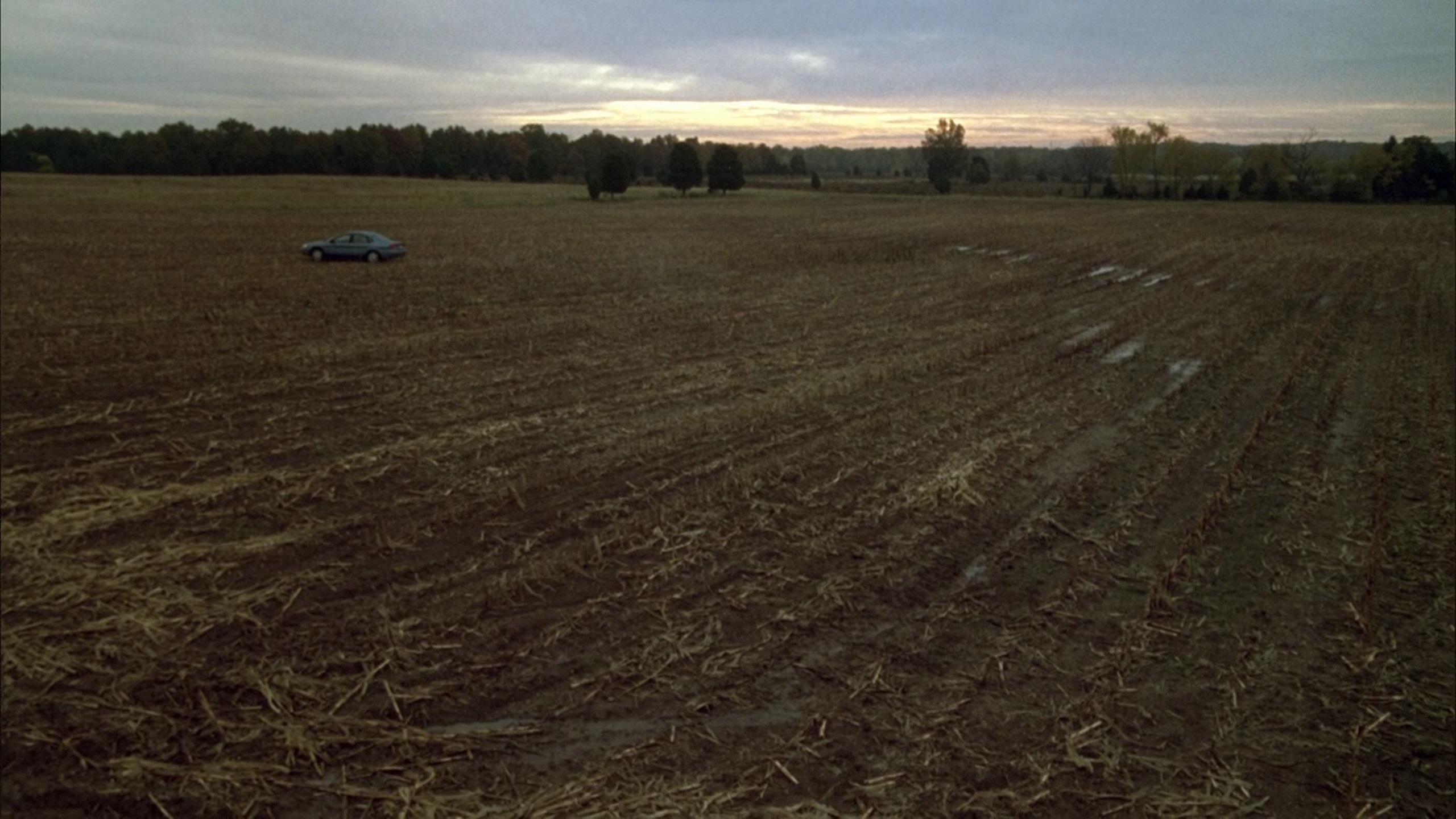 Broken Flowers (2005) 01:21:55
Broken Flowers (2005) 01:21:55
Each character is set up with their ultimate confrontation with the outside world which leads to an awakening, a rediscovery of their own passions and dreams or desires. In an interview with Amy Taubin for Film Comment, Jim Jarmusch discusses the book Paterson written by William Carlos Williams, “yet it was a big inspiration for the film Paterson because the beginning of the poem is using the metaphor of Paterson, the city, for being a man” (Taubin, 32). Paterson’s character, like Don and Adam, reflexively pulls back from the city, yet eventually becomes inspired by it at the end of the film. He meets an older Japanese poet who gives him a blank notebook after Paterson is devastated by losing his own. In shot 01:49:37-01:49:41 the older poet says “Sometimes empty pages present the most possibilities” to Paterson as he receives the new notebook (Paterson). Paterson then sits in front of his familiar waterfall and begins to write new poetry.
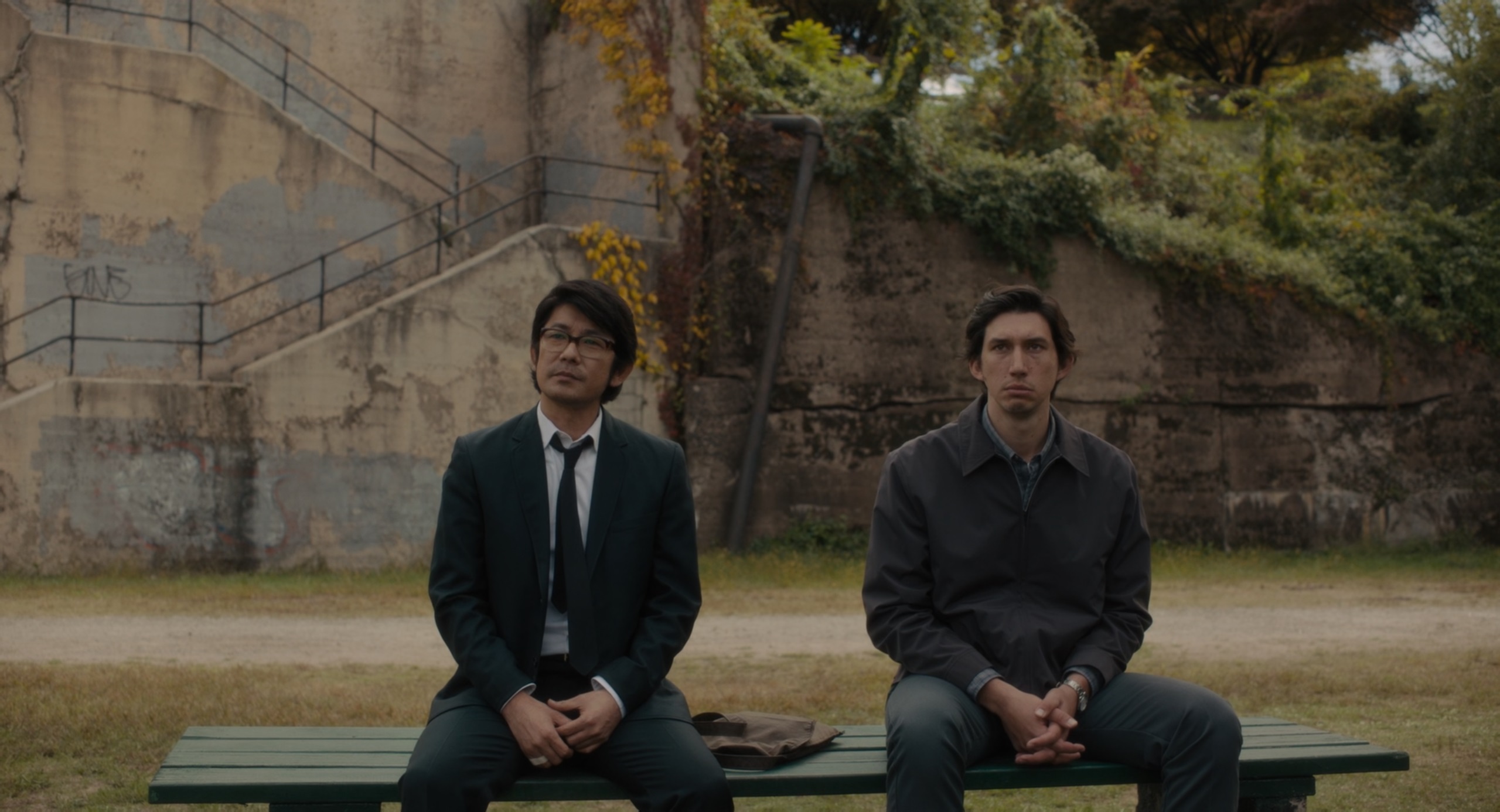 Paterson (2016) 01:44:27
Paterson (2016) 01:44:27
Adam is faced with a similar transformation near the end of Only Lovers Left Alive. Adam and Eve have returned to her home and are hungry and near giving up when she leaves for a moment and he hears a young musician singing at a bar. The scene at 01:47:53-01:51:58 is shown just for Adam, as he hears the song he is drawn closer and rediscovers his passion that he has stood so long away from. This revives Adam from his years of obfuscation with his passions and can be seen by his demeanor and attitude for the remainder of the film; he has fallen back in love with love. This echoes the notion Jarmusch speaks about in an interview with Leonard Quart in Cineaste in which Jarmusch talks about his inspiration for the poet scene in Paterson stating, “I based the scene on a little Zen parable where you encounter a stranger who puts you back on your path” (Quart, 30). In the same way the young musician sets Adam back on the path to enjoying his life, the connection he has to it, and the surroundings and consequences living life brings. Don, too, encounters the revelatory change at the end of Broken Flowers when he first tries to speak to a young man he thinks is his son, and then chases him to the street. There, while at an intersection he sees another man looking out the window of a cab and they lock eyes with each other. The shots at 01:39:19-01:40:47, specifically the final shot at 01:39:54-01:40:47 feature a free camera, metaphorically demonstrating a free Don. Don is still rather tame in his response, but we can see the wonder in his eyes and the renewed hope that has frozen him in his tracks on his face. The shots are the final of the film, we cut to black and the credits role, but the effect is clear. Don, throughout the course of the film and with the finding of his “son,” has changed like Adam and Paterson, into either who he was or a new version of himself.
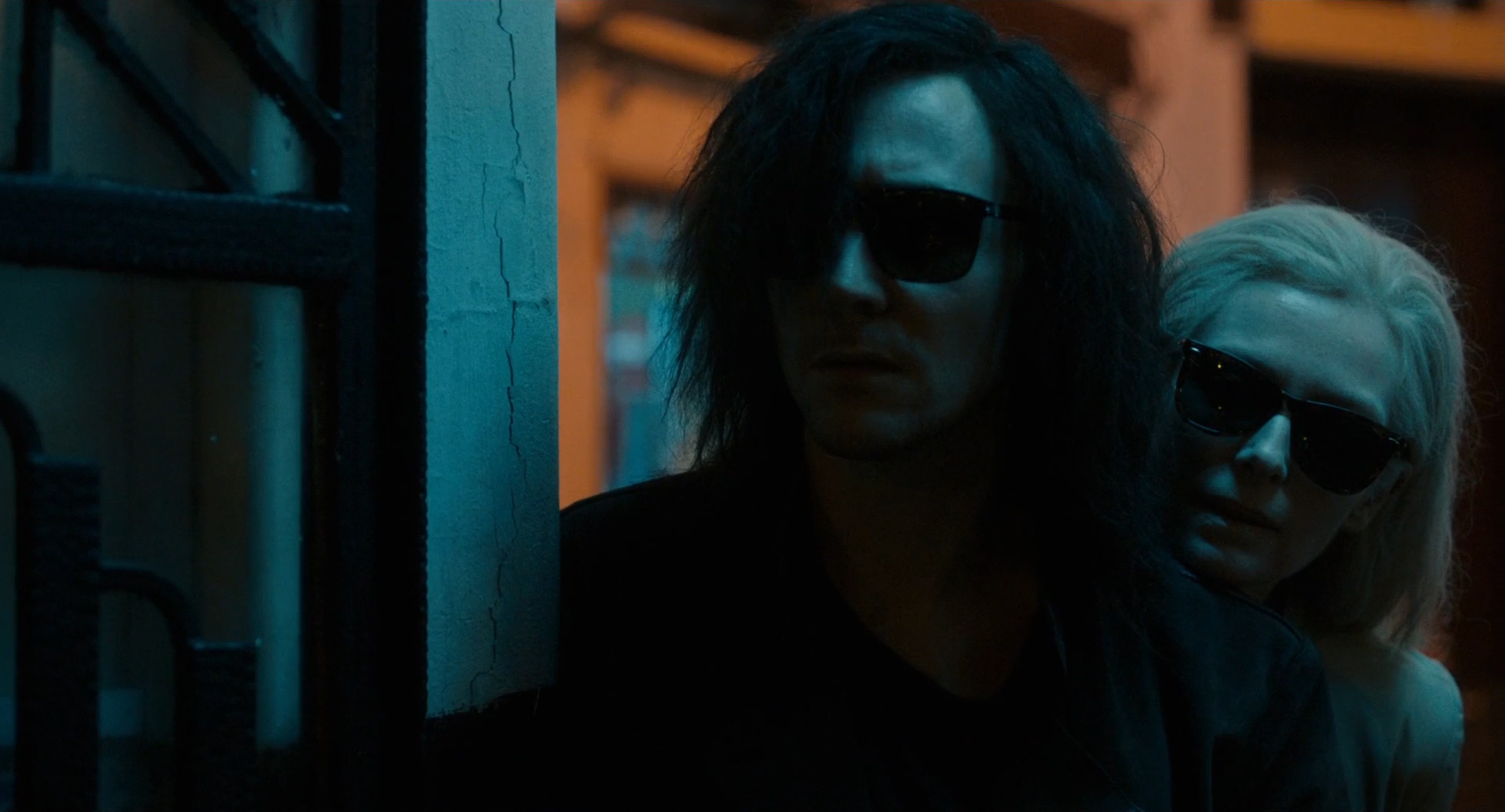 Only Lovers Left Alive (2013) 01:50:50
Only Lovers Left Alive (2013) 01:50:50
If there are any conjoining elements of these three films, it is a character who emotes the human condition of indignation and resignation, and then embraces life once again at the end. As Korola writes in her essay about Broken Flowers, “the car approximates the alienation characteristic of Jarmusch’s protagonists… who remain stubbornly beyond the reach of comprehension” (20). This alienation is alleviated as soon as Don exits the car and opens up to the first young man, then continues unraveling as he travels on foot to the intersection where he is inspired, the same way Adam must leave his home and Paterson had to lose his first notebook. The clear theme across these three films from Jarmusch is to show someone who has become disenchanted with life and who learns to re-enjoy the things they love or once wanted to love. Whether it be receiving a gift, meeting a stranger, or finally setting your path apart from where you have been going, they all go through the same process of declining and declining until they finally give in.
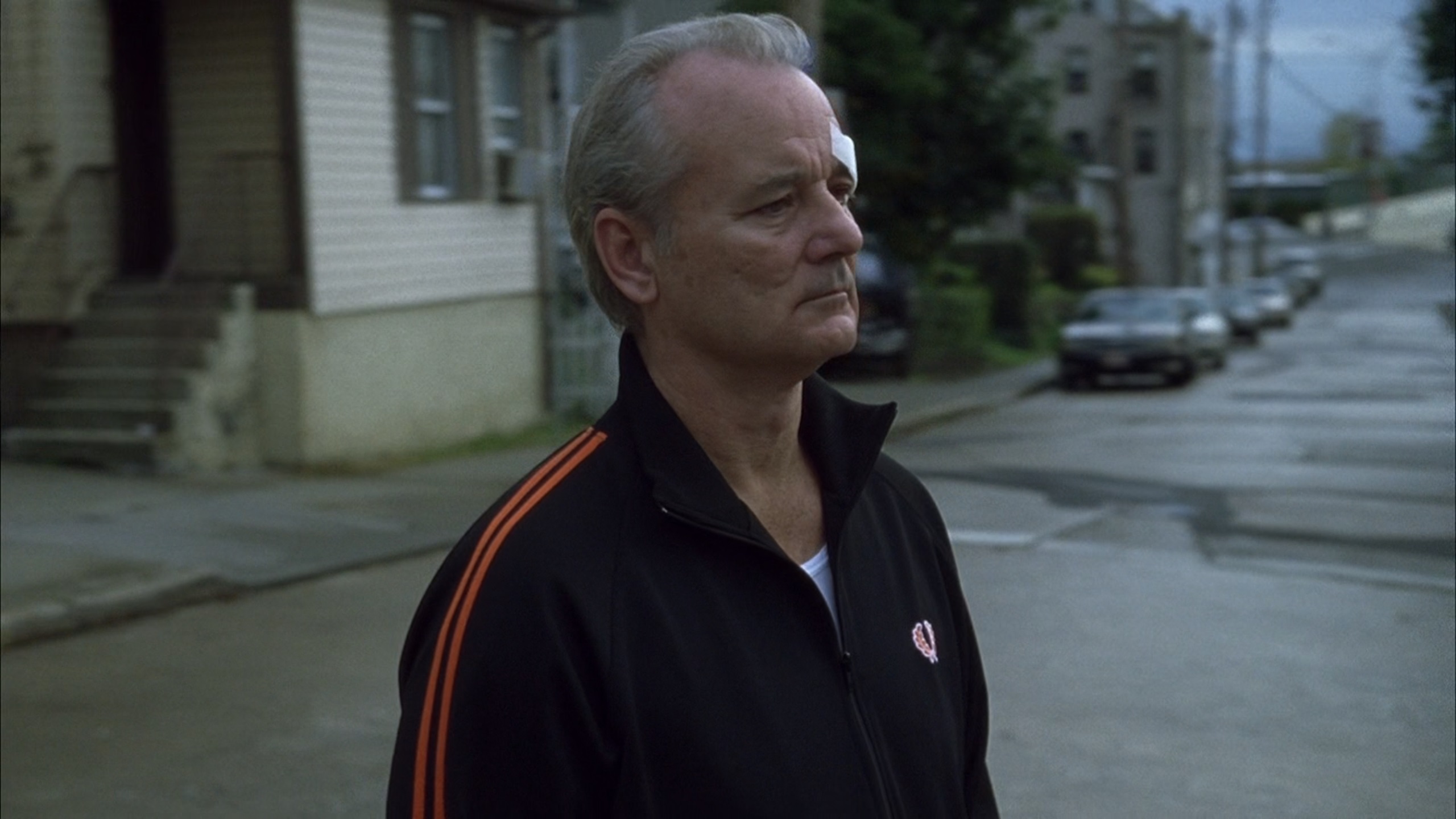 Broken Flowers (2005) 01:40:10
Broken Flowers (2005) 01:40:10
Across all three films are depictions of urban environments, birds-eye-view establishing shots, little non-diegetic music, and efficient, realism-inducing dialogue. These elements help set the mood for the traits of the main characters and allow for their persistence and indifference to be accepted. Jim Jarmusch goes through deliberate lengths to make these films portray careful realism, and that their characters are being drained from the act of life no differently from each other, while also having the same ability to be inspired be the things they have looked past the whole time. Don, Adam, and Paterson, like the urban environments the camera observes within their films, mirror the world the audience lives in, with their dynamic opposition to change yet their enduring stature across time and in the people in their lives, Laura, Eve, or Don’s possible son. The same influences and talents they hold at arm’s length for most of the film is eventually allowed to inhabit them again, and we see each change within the course of the film’s runtime. This re-orientation, like the looming buildings of the films, is a permanent trope in our culture which Jim Jarmusch captures elegantly.
Broken Flowers. Directed by Jim Jarmusch, performances by Bill Murray, Jessica Lange, Jeffrey Wright, Sharon Stone and Tilda Swinton, Focus Features, 2005.
Korola, Katerina. “Crossing a Man-Altered Landscape: Driving and the Vehicle in the Road Movies of Jim Jarmusch.” Film Matters, vol. 5, no. 1, Spring 2014, pp. 19–26. EBSCOhost, https://doi.org/10.1386/fm.5.1.19_1. Accessed 13 May, 2021.
Only Lovers Left Alive. Directed by Jim Jarmusch, performances by Tilda Swinton, Tom Hiddleston, Anton Yelchin, and Mis Wasikowska, Recorded Picture Company, 2013.
Paterson. Directed by Jim Jarmusch, performances by Adam Driver, Golshifteh Farahani, and Nellie, Amazon Studios, 2016.
Quart, Leonard. “Creating a Cinematic Prose Poem, An Interview with Jim Jarmusch.” Cineaste, Spring 2007, pp. 28-30. JSTOR, https://www.jstor.org/stable/26357006. Accessed 13 May, 2021.
Taubin, Amy. “Common Sense, American Indie Axiom Jim Jarmusch Talks About the Art of Routine in Paterson (and the Assembly of Chaos in Gimme Danger).” Film Comment, November-December 2016, pp. 32-36. JSTOR, https://www.jstor.org/stable/44990406. Accessed 13 May, 2021.
Chandler Murray
e:Murrayc15@gator.uhd.edu